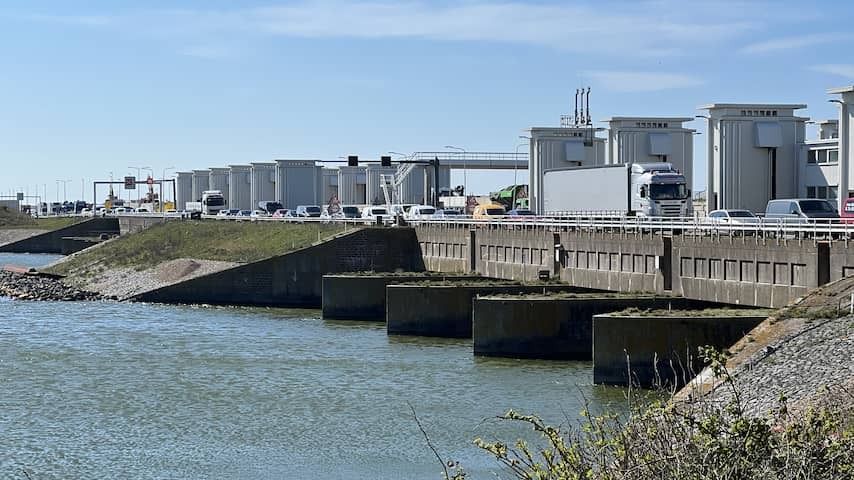
The Afsluitdijk had to be closed three times in the past three days due to malfunctions. First, the heat affected the bridge, then a sensor broke down, and then salt water led to damage. That last problem has not yet been resolved.
It was not a good week for the Afsluitdijk and for people who wanted to travel by car between Noord-Holland and Friesland. The problems started on Tuesday, when temperatures in the Netherlands rose well above 30 degrees Celsius.
Due to the heat, old steel bridges expand and can get stuck. That also happened with one of the two bridges at the Stevin locks. “To cool it down, water was sprayed on it,” says Rijkswaterstaat spokesperson Johan de Boer. But it did not help enough to keep both bridges open.
A day later, a broken sensor threw a wrench in the works. According to Rijkswaterstaat, it was an annoying mechanical defect that had nothing to do with the heat. Such a sensor must indicate that the bridge, which rotates around its axis, is exactly in the right place again. If the sensor does not give the green light, Rijkswaterstaat cannot let traffic through. After both bridges had to be closed briefly, traffic could then be directed over one of the bridges.
Later on Thursday, the Afsluitdijk had to be closed for a third time. Then a defect was discovered that was a result of the heat. Salt water from the Wadden Sea, which was used to cool the bridge on Tuesday, turned out to have ended up in an electricity cabinet. This was due to a burst hose. As a result, parts in the cabinet broke.
Currently, traffic in both directions is taking turns over one bridge again. Shipping traffic cannot pass through either. Mechanics are busy drying and cleaning the electrical cabinet completely. Rijkswaterstaat will provide an update on the defect in the course of Friday afternoon.
In each of those incidents, the Afsluitdijk had to be temporarily closed to traffic. “The moment a bridge malfunctions, we close it off,” says De Boer. Then the ANWB is called, which diverts traffic via one of the other bridges. That whole process can take several hours.